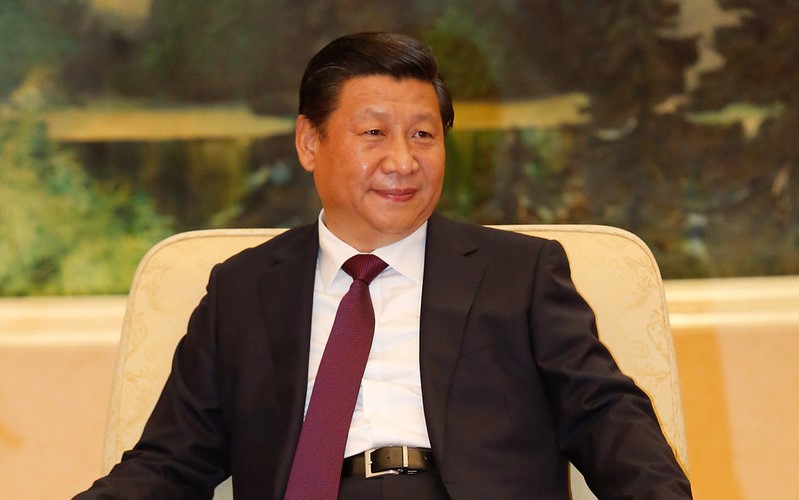Uncertainty ahead: Xi Jinping faces a challenging 2022
January 20, 2022
After an uncertain year in 2021, the only dependable prediction for China in 2022 is that Xi Jinping will return for a third term in power.
In 2021 China was, and in 2022 again will be, dominated by the domestic economy, relations with the United States, the COVID-19 pandemic and President Xi Jinping.
Despite spectacular bounce-back growth in the first half of the year, Chinas economy had slowed dramatically by years end. Worries centred on the property market, a perennial concern for over a decade due to fears of overheating.
While disaster has so far been averted, in 2022 all eyes will be both on how the government handles this looming crisis and how it continues to treat the private sector, a significant source of employment. It will also be important to see how Beijing implements its “dual circulation” strategy which is meant to strengthen the role of Chinese consumers and make them more important as sources of growth. The test will be to see whether this reenergises growth. Harsh lockdowns are also unlikely to aid growth in the year ahead.
Relations with the United States remain fractious despite Joe Bidens replacement of Donald Trump as president in January 2021. On the positive side, the COP26 climate change agreement in October and the USChina dialogue on the environment offered one of the few positive and constructive links between the two powers.
But the two sides remain as far apart politically as ever. The United States is increasingly concerned about Chinas assertiveness in the region and posture towards Taiwan. There is also strong bipartisan anger in the United States over Chinas human rights issues. In November and December, China and the United Statesheld separate summitson democracy, a remarkable symbol of their almost parallel diplomatic and ideological worlds.
Thesecompeting allieswill continue to try to manage their mutual antipathy and gain support from third parties in 2022. More deals like the AUKUS pact can be expected, as well as more efforts to promote the Belt and Road Initiative on the Chinese side. The Winter Olympics in late January will offer a moment to see this polarised world in a frozen shot with China no doubt proclaiming it a huge success. But the United States and its allies many of whom have already announced a diplomatic boycott are either condemning or doing their best to ignore it.
In 2021, the management of COVID-19 in China was markedly different to the rest of the world. Beijings insistence on draconian lockdowns meant that even single incidences of infection saw cities and regionsclosed down. The upside to this was effective prevention of COVD-19 spreading.
For the United States, pandemic management underlined deeply divided domestic politics, with masks and vaccinations becoming battlegrounds between left and right. Similar divisions of libertarians versus their opponents were seen across Europe and Australia. 2022 will make clear which of these comes up delivering at least some level of normality. A third year of disruption, economic turmoil and uncertainty will lead to heavier political and social costs.
Whether Xis autocracy will prove more resilient than Western democracy will be adecisive question. What is already clear is that the pandemic has deepened divisions in terms of government systems, nations and ideology. These will remain, and most likely deepen, in the coming year.
In 2021, the domestic political narrative within China was dominated by the celebration of the 100th anniversary of the Communist Party in July. Authorised histories of the partys time in existence and period in power came out in April, and then as part of an official resolution were issued during the partys annual plenum meeting in October. The latter made clear the long list of challenges from delivering public health to addressing Chinas environmental problems and dealing with inequality.
Xis administration showed it took no hostages, giving figures like multi-billionaire Jack Ma of Alibaba harsh treatment for criticisms he was deemed to have made of the central bank. Other entrepreneurs also found themselves on thin ice. The message was clear China under Xi was about levelling up the middle class, the new heroes of the revolution. Their standards of living needed addressing, something that became even clearer when the results of the national census held every 10 years were issued.
This census showed a dramatically slowing population growth rate, with the final figure barely reaching 1.4 billion. Over 60 per cent of Chinas population is now urban, up from 50 per cent in 2010. Xis China is increasingly metropolitan, employed in the service sector and high consuming. The ultra-rich have to serve the people or risk being politically punished. As part of this, a new programme of “common prosperity” was announced by the central government a Chinese version of levelling up. The aim is to address the pressure on the middle class, rather than focussing on the extremely poor or the entrepreneurial wealthy.
In 2022, the most dependable prediction is that at the five yearly Party Congress, Xi will return for a third term in power. This will confirm the widely held notion that his is a perpetual leadership.
Expect no mercy to opponents of Xis mission to make China great again. 2022 will be a further stepping-stone to this all-important milestone.
This article was first published by East Asia Forum and is reproduced under a Creative Commons licence.

